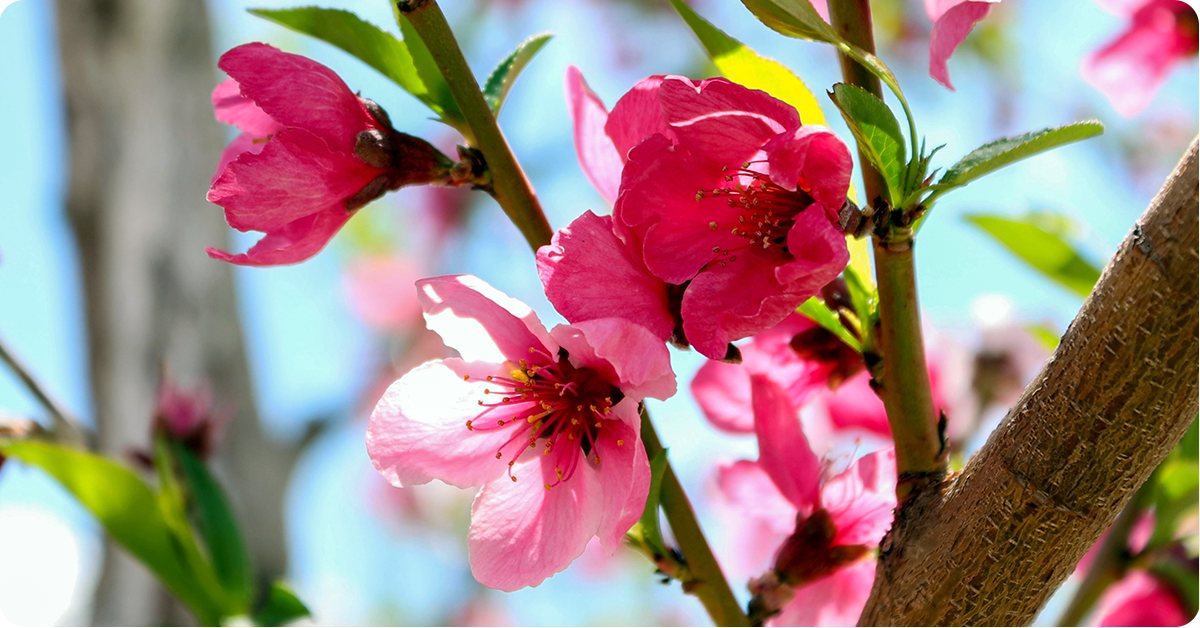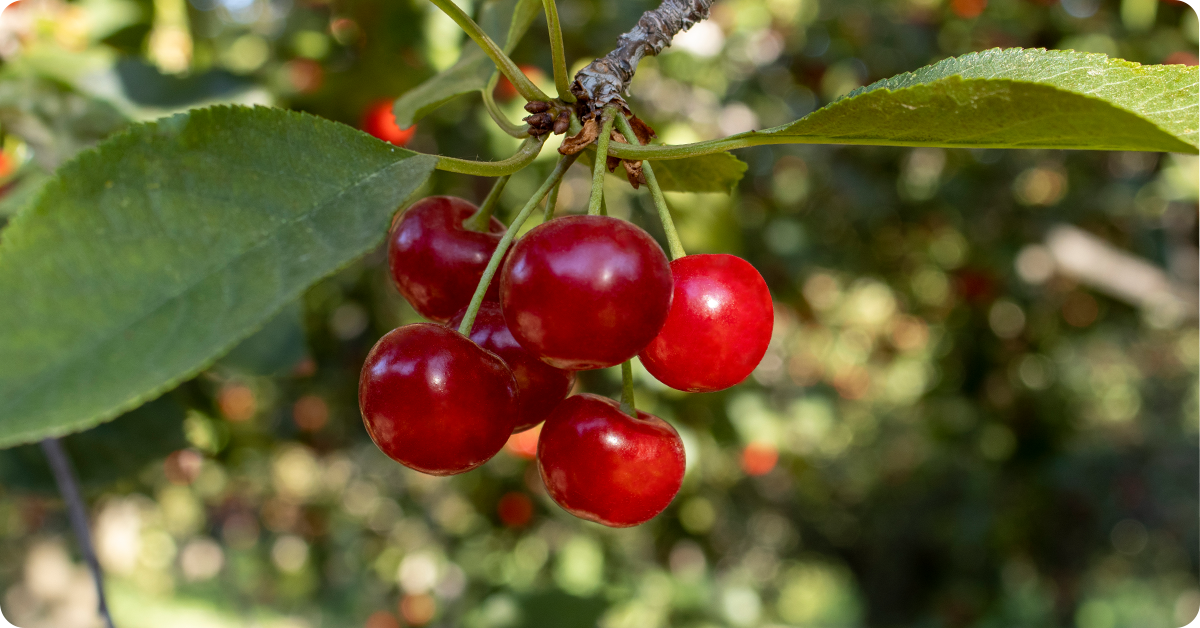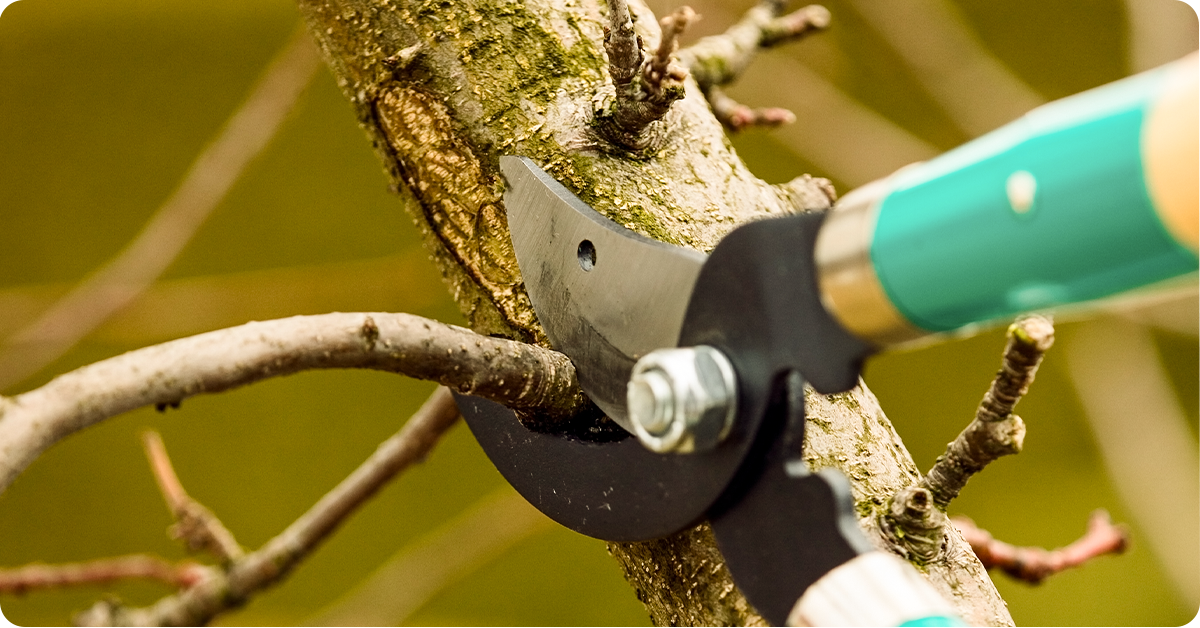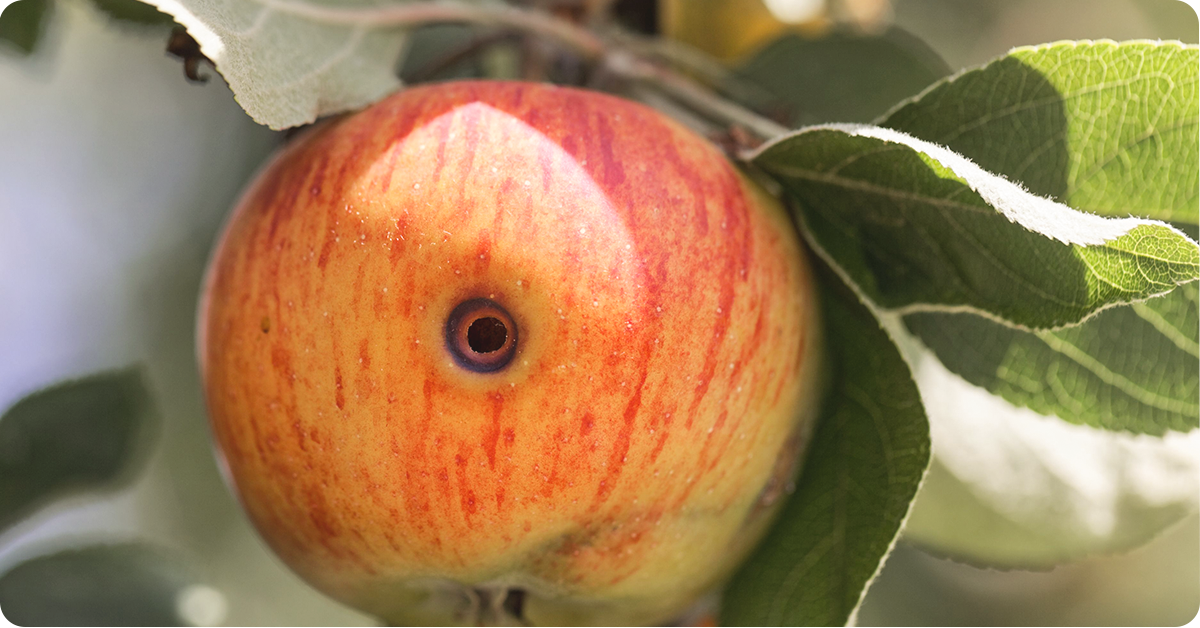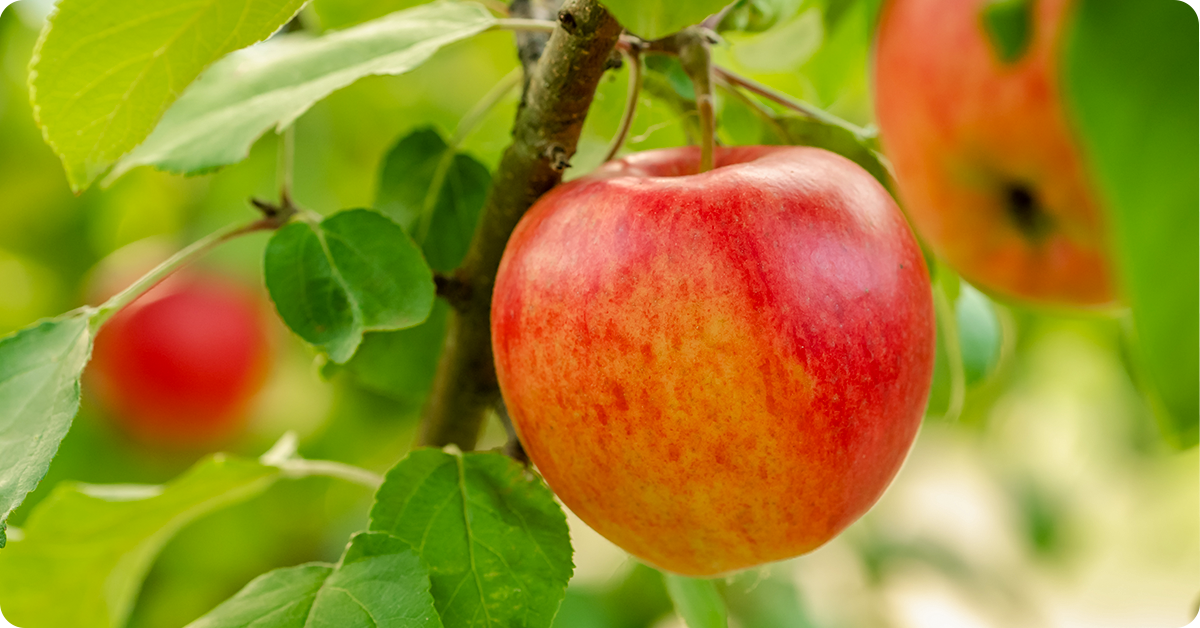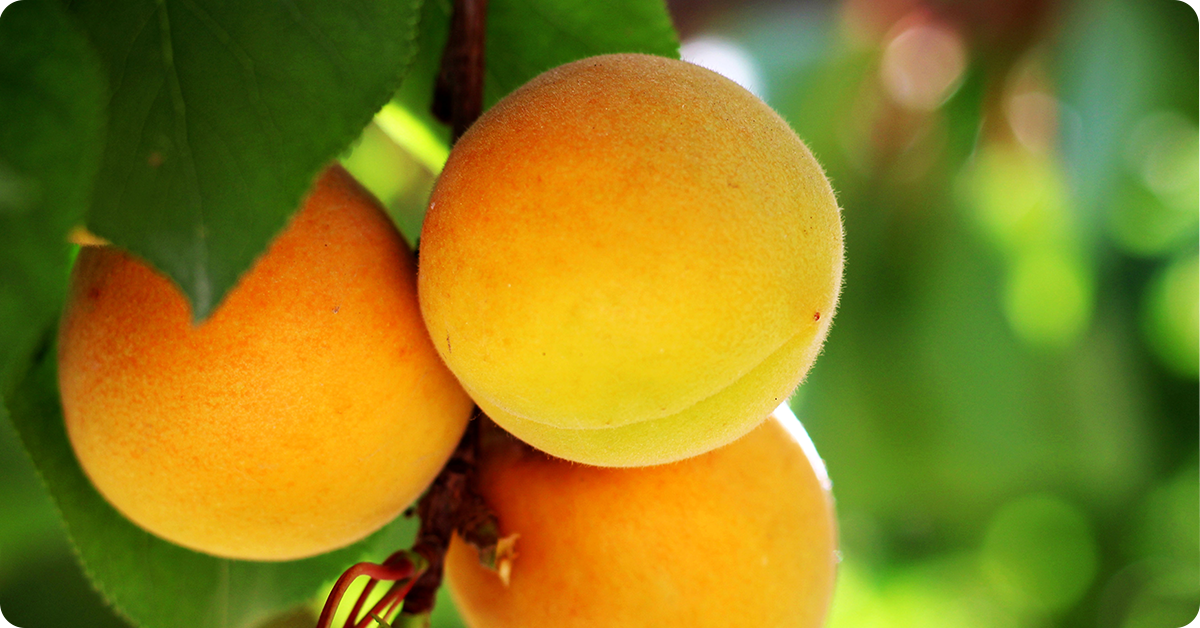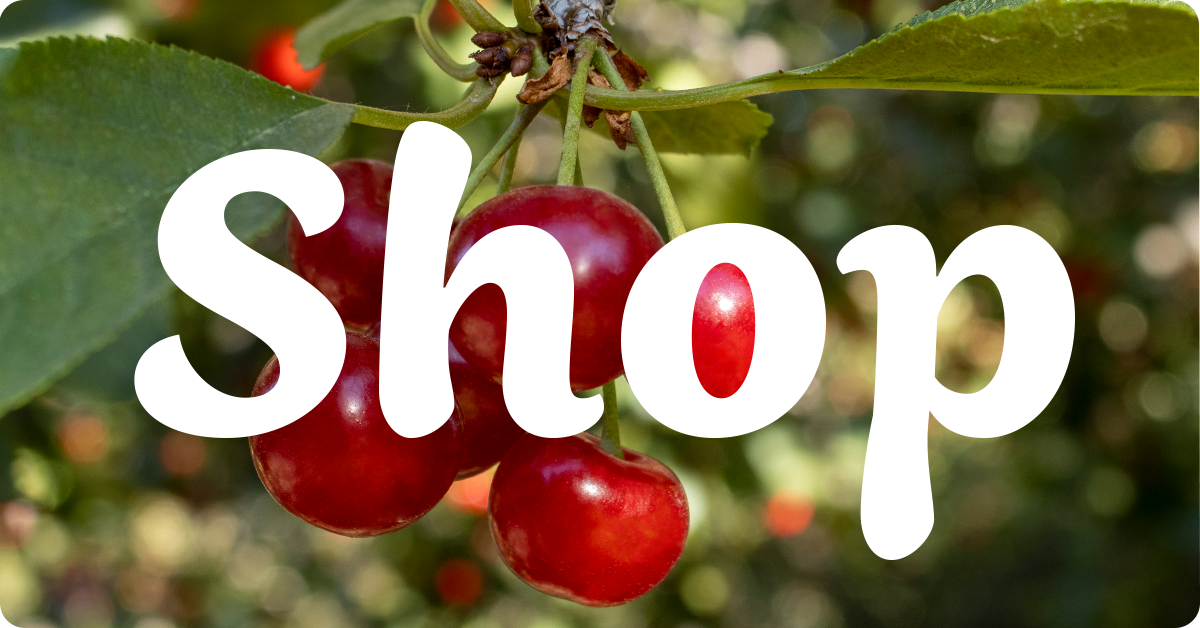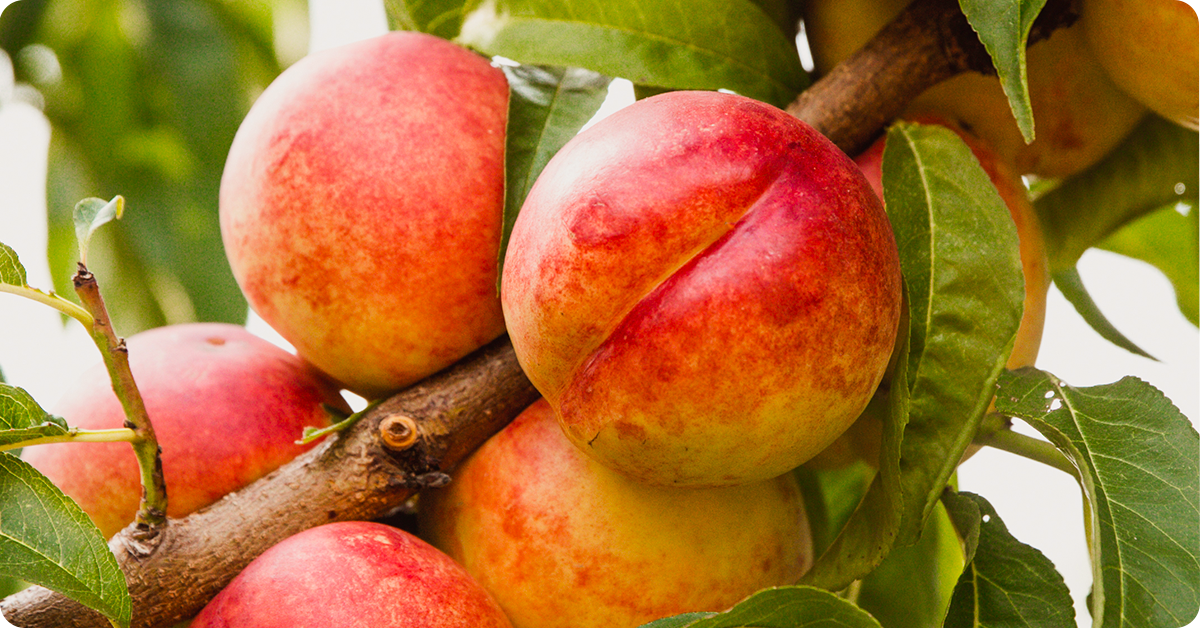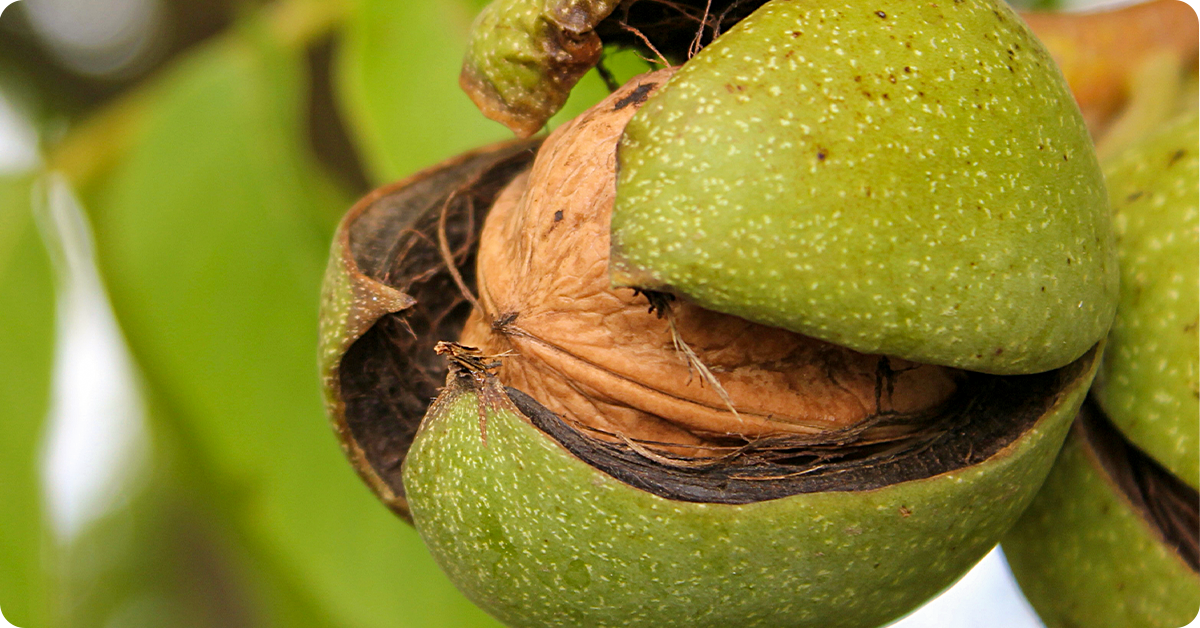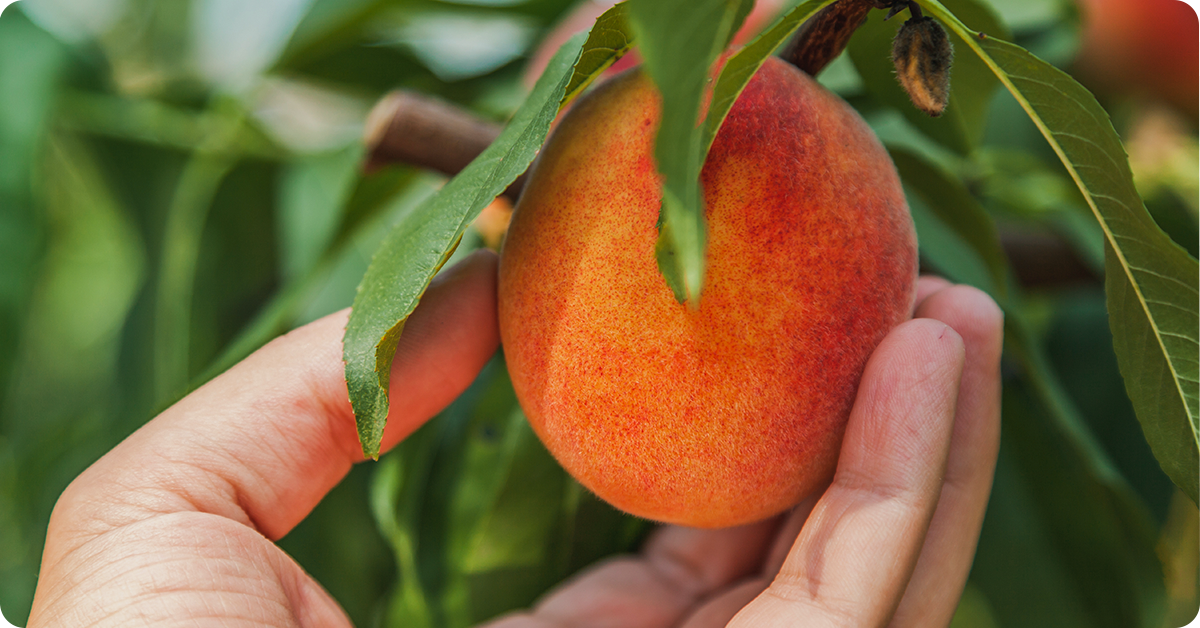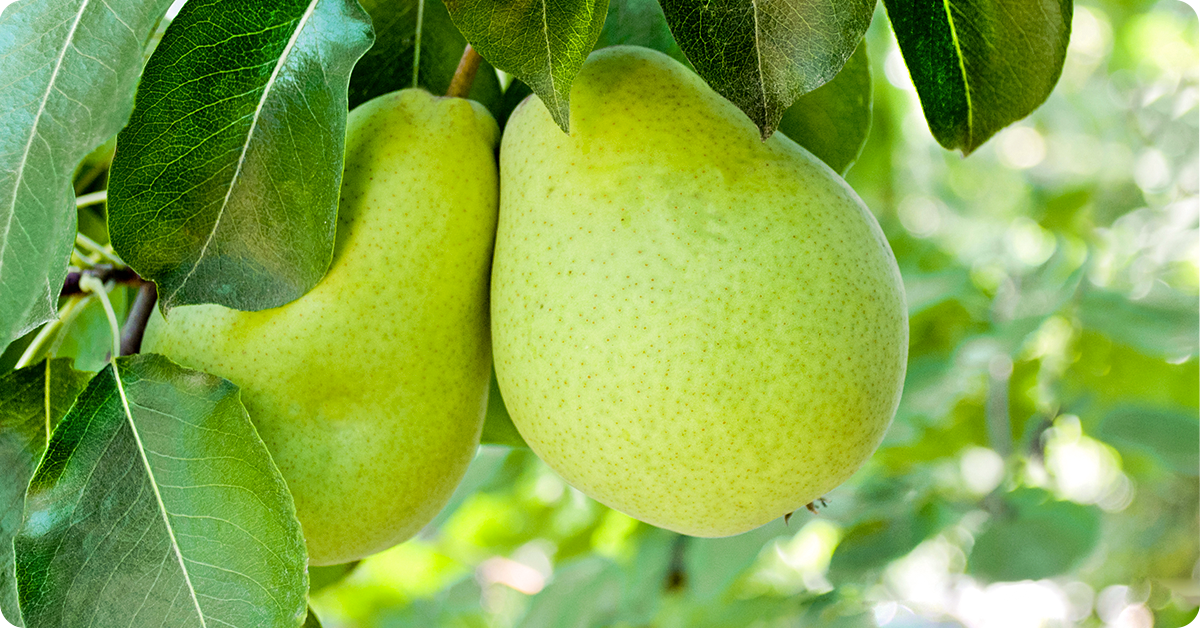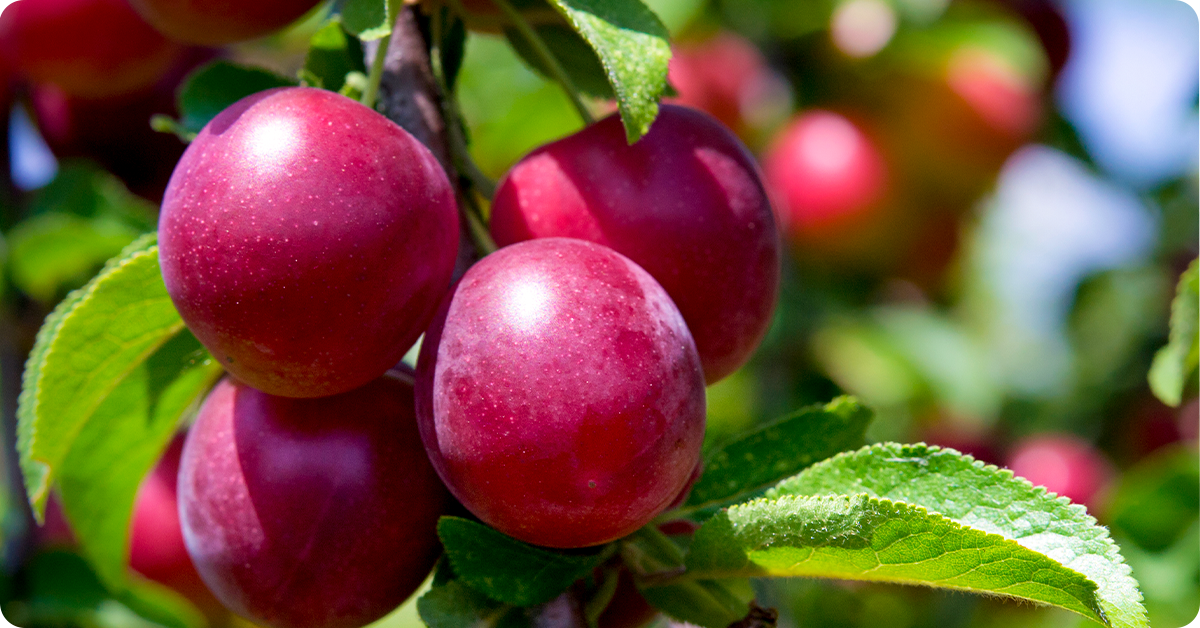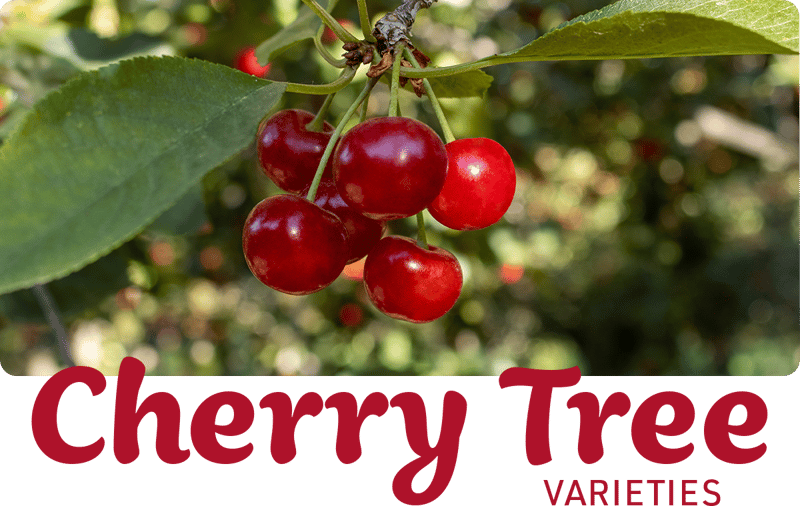
Whether your cherries come from a local producer or you grow them in your own backyard, there are so many delicious ways to enjoy these fresh, juicy fruits. IFA Cherry Tree varieties are specially selected for their superb flavor and performance in our intermountain climates, making them ideal for backyard growers and fruit producers. Start growing to enjoy decadent cherry-flavored desserts, homemade jams or a tasty snack.
Bing Cherry Trees are not only a source of deliciously sweet fruit but also add beauty to any garden with their beautiful spring blossoms and lush, green foliage. These trees are known for producing an abundant harvest of deep red cherries, each one packed with juicy flavors and numerous health benefits. Rich in antioxidants, vitamins and minerals, Bing cherries can boost your health while providing a delightful snack or ingredient for various culinary creations. Furthermore, Bing Cherry Trees are relatively easy to cultivate, making them an excellent choice for both novice and experienced gardeners.
Bing Cherries store well for one to two weeks in the refrigerator. For the more delicious cherries, Plant Bing Cherry trees with Lapins, Stella, Vandalay and Tehranivee cherry trees to promote cross-pollination and better fruit-set.
Characteristics:
Tree Height*: 12 feet
Tree Width*: 12 feet
Rootstock: Semi-dwarf
USDA Zone: 5
Fruit Taste: Sweet & juicy flavor
Fruit Size: Large
Fruit Flesh: Red & meaty
Harvest: Ripens in July
Pollinators: Lapins, Stella, Vandalay, Tehranivee
*Tree height and width is based on proper pruning. See growing tips>>
Carmine Jewel Cherry Bushes are renowned for their early and abundant yields, often producing fruit within a year or two of planting. The Carmine Jewel produces deep crimson cherries that are a treat for the palate and a feast for the eyes. Its blossoms add a splash of color in the spring, while the ripe cherries in summer attract a variety of birds and pollinators. These bushes are incredibly resilient, thriving in zones two through seven, and are less susceptible to many of the diseases that affect larger cherry trees, making them a low-maintenance option for gardeners of any skill level.
Carmine Jewel Cherries store well for one to two weeks in the refrigerator. Carmine Jewel Cherry bushes are self-fertile but cross-pollination and better fruit-set will occur if planted near Romeo or Juliet cherries.
Characteristics:
Tree Height*: 5 feet
Tree Width*: 5 feet
Rootstock: Semi-dwarf
USDA Zone: 2
Fruit Taste: Sweet & tart flavor
Fruit Size: Medium
Fruit Flesh: Deep red
Harvest: Ripens in July
Pollinators: Not self-fertile–Grow with Romeo or Juliet Cherry Bushes
*Bush height and width is based on proper pruning. See growing tips>>
Juliet Cherry bushes are a splendid addition to any garden, offering not only their visually appealing aesthetic but also a bounty of sweet, delectable cherries. Known for their resilience and ease of care, these bushes can thrive in a variety of climates, making them a versatile choice for gardeners across the intermountain region. The Juliet Cherry is particularly celebrated for its cold hardiness, allowing it to produce fruit even in cooler temperatures where traditional cherry trees may struggle. Its compact size also makes the Juliet Cherry bush an ideal option for urban gardeners and those with limites space to enjoy the pleasures of home-grown cherries.
Juliet Cherries store well for one to two weeks in the refrigerator. Juliet cherry bushes are self-fertile but cross-pollination and better fruit-set will occur if planted near Romeo or Carmine Jewel cherries.
Characteristics:
Tree Height*: 5 feet
Tree Width*: 5 feet
Rootstock: Semi-dwarf
USDA Zone: 2
Fruit Taste: Sweet & tart flavor
Fruit Size: Large
Fruit Flesh: Bright red
Harvest: Ripens in July
Pollinators: Not self-fertile–Grow with Romeo or Carmine Jewel Cherry Bushes
*Bush height and width is based on proper pruning. See growing tips>>
Lapins Cherry Trees offer a bountiful harvest of sweet, succulent cherries, making them a top choice for both novice and experienced gardeners alike. Known for their hardiness and self-pollination, these trees simplify the gardening process. Lapins cherries boast a deep, rich flavor and a large, firm texture that is perfect for fresh eating, baking and preserves. Lapins Cherry tree add value to any landscape with its beautiful spring blossoms and lush summer foliage. Growing Lapins Cherry Trees is not just about the harvest; it's about transforming your garden into a vibrant, fruitful oasis.
Lapins Charries store well for one to two weeks in the refrigerator. Lapins Cherry trees are self-fertile but cross-pollination and better fruit-set will occur if planted near other sweet cherries.
Characteristics:
Tree Height*: 12 feet
Tree Width*: 12 feet
Rootstock: Semi-dwarf
USDA Zone: 4
Fruit Taste: Sweet flavor
Fruit Size: Large
Fruit Flesh: Dark red
Harvest: Ripens in late July to August
Pollinators: Self-fertile
*Tree height and width is based on proper pruning. See growing tips>>
Uncover the bliss of harvesting sun-kissed cherries from the comfort of your backyard. Rainier Cherries are distinguished by their striking yellow-red color with a flavor that is both sweet and tart. Beyond their delicious taste, Rainier Cherry Trees add a breathtaking element to any landscape with their beautiful spring blossoms and vibrant foliage. Cultivating these trees at home means you'll enjoy the freshest fruits rich in nutrients, including vitamins, antioxidants and anti-inflammatory compounds.
Rainier Cherries store well for one to two weeks in the refrigerator. Plant Rainier Cherries with Bing, Lapins, Stella, Tehranivee, Vandalay cherry trees for cross-pollination and better fruit-set.
Characteristics:
Tree Height*: 12 feet
Tree Width*: 12 feet
Rootstock: Semi-dwarf
USDA Zone: 5
Fruit Taste: Sweet & zesty
Fruit Size: Large
Fruit Flesh: Firm with a creamy-white center
Harvest: Ripens in July
Pollinators: Bing, Lapins, Stella, Tehranivee, Vandalay
*Tree height and width is based on proper pruning. See growing tips>>
Gardening enthusiasts and fruit lovers alike are drawn to the Romeo Cherry Bush for its unique combination of aesthetic appeal, ease of care and bountiful harvests. Unlike traditional cherry trees that demand extensive space and maintenance, the Romeo Cherry Bush presents an accessible alternative that thrives in a variety of climates and soil types. Its compact size makes it an ideal choice for gardeners with limited space, allowing for urban gardeners and growers with small backyards to enjoy fresh cherries. Beyond its practical advantages, the Romeo Cherry Bush is celebrated for its striking spring blossoms and vibrant foliage, which add a burst of color to any landscape. Romeo Cherry Bushes yield a rich harvest of dark, sweet cherries that are perfect for fresh eating, baking or preserving.
Romeo Cherries store well for one to two weeks in the refrigerator. Romeo Cherry Bushes are self-fertile but cross-pollination and better fruit-set will occur if planted near Juliet or Carmine Jewel cherries.
Characteristics:
Tree Height*: 5 feet
Tree Width*: 5 feet
Rootstock: Semi-dwarf
USDA Zone: 2
Fruit Taste: Sweet & tart flavor
Fruit Size: Medium
Fruit Flesh: Bright red
Harvest: Ripens in July
Pollinators: Not self-fertile–Grow with Carmine Jewel or Juliet Cherry Bushes
*Bush height and width is based on proper pruning. See growing tips>>
Elevate your garden with home-grown Stella cherries. Stella Cherry Trees are a beacon for gardeners aiming to infuse their landscapes with both beauty and practical bounty. As a self-fertile variety, Stella allows even gardeners with limited space to enjoy the production of succulent, sweet cherries. Beyond the ease of cultivation, Stella Cherry Trees are renowned for their stunning spring blossoms. Their vibrant pink flowers not only add a splash of color to your garden but also attract beneficial pollinators, contributing to the health and vitality of your entire garden. Stella Cherry Trees produce a firm and bold red fruit with a sweet and juicy flavor.
Stella cherries are self-fertile but cross-pollination and better fruit-set will occur if planted near other cherry trees.
Characteristics:
Tree Height*: 12 feet
Tree Width*: 12 feet
Rootstock: Semi-dwarf
USDA Zone: 5
Fruit Taste: Sweet & juicy flavor
Fruit Size: Large
Fruit Flesh: Firm & bold red
Harvest: Ripens in mid-July
Pollinators: Self-fertile
*Tree height and width is based on proper pruning. See growing tips>>
Sweet Treat Pluerry Trees are the perfect fusion of plum and cherry flavors. This hybrid fruit tree offers an exceptional taste experience that is both sweet and juicy, making it a favorite among fruit growers. The distinctive flavor profile of Sweet Treat Pluerry is not the only reason it captivates so many; its ease of growth and bountiful harvests make it a practical and rewarding choice for backyard orchards and gardens.
Sweet Treat Pluerries store well up to four weeks in the refrigerator or on the tree. Be sure to plant with Burgundy, Toka or Santa Rosa plum trees for cross-pollination and fruit-set.
Characteristics:
Tree Height*: 10 feet
Tree Width*: 10 feet
Rootstock: Semi-dwarf
USDA Zone: 5
Fruit Taste: Sweet & tangy flavor similar to cherries
Fruit Size: Small
Stone Type: Clingstone
Fruit Flesh: Bright yellow
Harvest: Ripens in July to August
Pollinators: Santa Rosa Plum, Burgundy Plum, Flavor King Pluot
*Tree height and width is based on proper pruning. See growing tips>>
Tehranivee Cherry Trees are prized for their self-fertility and delicious sweet cherries. The Tehranivee variety produces a bountiful harvest of large, sweet cherries that are perfect for eating fresh, baking or preserving. These trees are known for their resilience, showing good resistance to common cherry diseases ensuring a healthier crop and reducing the need for chemical treatments. Their adaptability to a range of soil types and conditions, coupled with their beautiful spring blossom, makes Tehranivee Cherry Trees not only a productive but also an aesthetically pleasing addition to any garden space.
Tehranivee Cherries store well for one to two weeks in the refrigerator. Tehranivee Cherry Trees are self-fertile but cross-pollination and better fruit-set will occur if planted near other cherry trees.
Characteristics:
Tree Height*: 12 feet
Tree Width*: 12 feet
Rootstock: Semi-dwarf
USDA Zone: 5
Fruit Taste: Sweet & juicy flavor
Fruit Size: Large
Fruit Flesh: Dark red
Harvest: Ripens in late July
Pollinators: Self-fertile
*Tree height and width is based on proper pruning. See growing tips>>
Vandalay Cherry Trees are renowned for their unique combination of beauty, productivity and adaptability. These trees are not only admired for their stunning spring blossoms but they are also highly valued for their delicious fruit. The cherries produced by Vandalay trees are large, sweet and perfect for a variety of culinary uses, from fresh eating to baking. Vandalay Cherry Trees are known for their hardiness and are able to thrive in a wide range of climatic conditions, making them a versatile addition to gardens across the Intermountain West.
Stores well for one to two weeks in the refrigerator. Vandalay cherries are self-fertile but cross-pollination and better fruit-set will occur if planted near other cherry trees.
Characteristics:
Tree Height*: 12 feet
Tree Width*: 12 feet
Rootstock: Semi-dwarf
USDA Zone: 5
Fruit Taste: Sweet flavor
Fruit Size: Large
Fruit Flesh: Dark red
Harvest: Ripens in mid-July
Pollinators: Self-fertile
*Tree height and width is based on proper pruning. See growing tips>>
Self-Pollinating and Cross-Pollinating Fruit
Cherry trees are either self-pollinating (self-fertile) or cross-pollinating (self-sterile). Self-pollinating cherry trees, such as the 'Stella' and 'Compact Stella,' have the ability to fertilize their own flowers with their own pollen, making them ideal for gardeners with limited space for multiple trees. This means that a single self-pollinating cherry tree can bear fruit on its own without the need for a partner.
On the other hand, cross-pollinating cherry trees require the pollen from the flowers of one tree to be transferred to the flowers of another tree of a different variety in order to produce fruit. This process often involves the work of bees and other pollinators. Varieties like 'Bing' and 'Rainier' fall into this category and require a compatible partner nearby for successful fruit production.
Understanding the distinction between the two pollination types is vital for anyone wanting to grow and harvest their own cherries. Make sure you understand the pollination needs of your cherry tree varieties before planting.
Improve Cherry Harvests
Cherries rely heavily on successful pollination to produce fruit. For cherry producers, understanding and enhancing the pollination process is key to maximizing harvests. One effective strategy is to ensure the presence of pollinator-friendly environments. This includes planting a variety of flowers that bloom at different times of the year to attract and sustain a diverse population of pollinators. Additionally, integrating beehives directly into cherry orchards during the flowering period can dramatically increase pollination rates. It's also important to understand which cherry varieties share the same blooming period in order to promote cross pollination and fruit set.
Get growing by reading about Backyard Fruit Tree 101, IFA's Growing Guide for Cherries, fruit tree pruning tips and insect control for fruit trees. Discover more fruit growing tips by visiting IFA's Helping to Grow Blog.
Backyard Fruit Trees 101 for Growers
Grow your own apples, cherries, peaches and nectarines right in your backyard. Learn how to pick and care for backyard fruit trees Continue >>>
IFA’s Growing Guide for Cherries
Grow better, more productive Stone Fruits: Peaches, Cherries, Apricots, Plums and Nectarines Continue >>>
Pruning Different Types of Fruit Trees
Annual pruning improves the overall health and growth of your fruit tree. These simple tips help add years of great fruit production. Continue >>>
Control Common Fruit-Tree Pests
Effectively manage fruit-tree pests with the right tools and knowledge. Discover five common fruit-tree pests and how to control them. Continue >>>
Looking to grow the perfect fruit for you and your family? Discover IFA fruit and nut tree picks perfect for the intermountain west.
*Availability varies by season and location.























